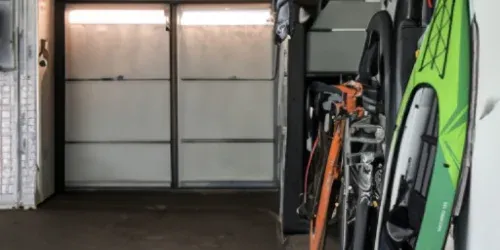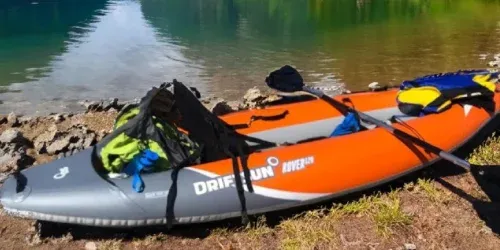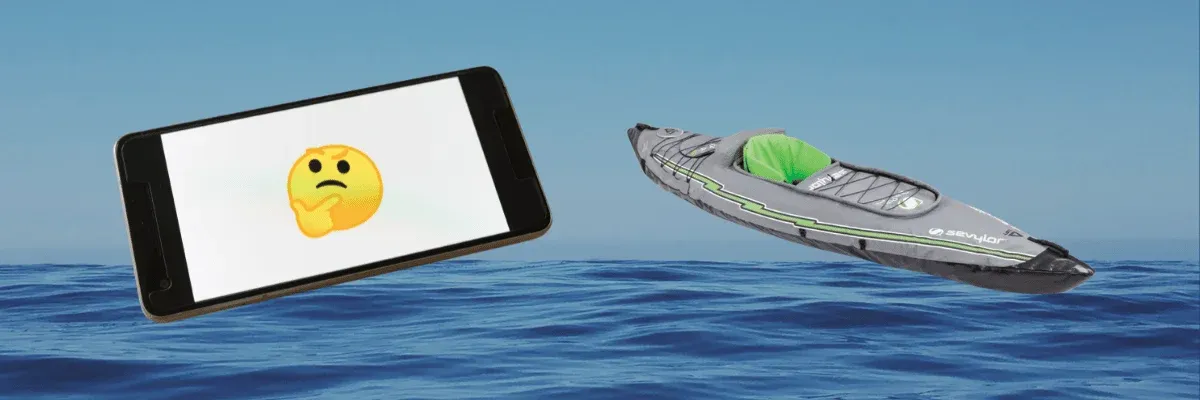Inflatable kayaks have revolutionized the way we enjoy water sports, offering convenience and portability that traditional kayaks can't match. But with this convenience comes the question: is it ok to leave your inflatable kayak inflated? This article will delve into the nuances of inflatable kayak care, providing you with the knowledge to keep your kayak in top condition.
Key Takeaways:
- Understand the implications of leaving an inflatable kayak inflated for extended periods.
- Learn about the best practices for storing your inflatable kayak to maintain its longevity.
- Discover tips for proper care and maintenance of inflatable kayaks.

The Basics of Inflatable Kayak Care
When it comes to maintaining your inflatable kayak, understanding the basics is crucial. Most inflatable kayaks are designed to withstand the pressures of being inflated for a reasonable amount of time. However, leaving your kayak inflated indefinitely can lead to unnecessary stress on the material and seams. It's essential to consider factors such as direct sunlight, temperature changes, and the environment where the kayak is stored.

The Impact of Environmental Factors
Direct sunlight can be particularly harmful to inflatable kayaks. The UV rays can degrade the material over time, causing it to become brittle and more susceptible to punctures. Extreme temperatures, both hot and cold, can also affect the air inside the kayak, leading to overinflation or deflation. It's best to store your inflatable kayak in a cool, dry place away from the elements to protect it from such damage.
Storing Your Inflatable Kayak
When it comes to storage, finding the right space is key. A storage unit or garage that provides shelter from the sun and heat is ideal. If you must store your inflatable kayak outside, consider using a protective cover to shield it from direct sunlight and other elements. Ensure the storage space is free from sharp objects that could puncture the kayak.
The Deflation Process
Deflating your kayak properly is just as important as inflating it. The deflation process should be done carefully to avoid damaging the valves or the kayak itself. Leave a little air inside to help maintain the kayak's shape and prevent creases that could weaken the material. Fully deflate the kayak only when necessary, such as for transport or when you need more room in your storage space.
Maintaining the Integrity of Your Inflatable Kayak's Surface
Maintaining the surface of your inflatable kayak is just as important as managing the air inside. After each use, especially in saltwater, a fresh water rinse is essential to remove salt residues that can corrode the material over time. Use a soft bristle brush and some mild natural soap to gently scrub away any dirt or sand. This not only protects the seams and material but also keeps your kayak looking new. After cleaning, make sure to let your kayak air dry completely before storing it to prevent mold and mildew growth.

For those who frequently paddle board or use an inflatable SUP, the same care should be applied to the deck pad and board bag. A thorough cleaning after use will remove any potentially damaging elements like sharp objects or dirt that could scratch or puncture the surface. When it comes to storing your paddle board inflated, ensure it's in a cool, clean water environment away from direct sunlight and heat. If you're short on storage space, you can fully deflate your board and roll it up to easily fit in a storage bag, making sure to leave a little air inside to maintain shape and protect the material.
Protecting the Seams and Material
The seams of your inflatable kayak are its most vulnerable points. To protect them, avoid dragging the kayak over rough surfaces and ensure it's fully inflated to the recommended psi before use. This helps distribute the pressure evenly and reduces the risk of seam failure. Also, be mindful of the kayak's material when folding or rolling it for storage to avoid creating sharp creases.
Tips for Prolonged Storage
If you plan to leave your inflatable kayak inflated for an extended period, there are several tips to follow. First, slightly reduce the air pressure to accommodate temperature changes that could cause overinflation. Store the kayak on its side or hang it to prevent deformation. Check on the kayak periodically to adjust the air pressure and inspect for any issues.
Tips for Protecting Your Inflatable Kayak from the Elements
When it comes to protecting your inflatable kayak, it's not just about whether you leave it inflated or not. The elements play a significant role in the longevity of your kayak. Direct sunlight, for instance, can be particularly harsh on the material of most inflatable kayaks. Prolonged exposure can degrade the fabric, causing it to become brittle and more susceptible to punctures. To avoid this, it's best to store your inflatable kayak in a dry place that's shielded from the sun. If you must leave it outside for a short period, consider using a UV-protectant cover to shield it from the sun's damaging rays.
On the other side of the spectrum, extreme temperatures can also affect your kayak. Cold weather can make the material stiff and more prone to cracking, while hot temperatures can increase the air pressure inside, potentially leading to overinflation. It's crucial to store your inflatable kayak in a temperature-controlled environment to prevent these issues. If you're using a storage unit or garage, ensure it doesn't experience severe temperature changes that could damage your kayak. A little care in selecting the right storage space can go a long way in extending the life of your inflatable boat.
Inflatable SUPs and Paddle Boards
The same principles apply to inflatable SUPs and paddle boards. It's generally not recommended to leave a paddle board inflated for extended periods, especially in direct sunlight or extreme temperatures. Store your paddle board in a board bag to protect it from the elements and ensure it's in a dry location.
When More Room Is Needed
Sometimes, you may need to fully deflate your inflatable kayak or paddle board to make more room in your storage space. In such cases, ensure the board or kayak is completely dry, clean, and free from debris before folding it neatly. Use a storage bag to keep it compact and protected from dust and dirt.

Summary
Leaving an inflatable kayak or paddle board inflated for short periods is generally fine, but for extended storage, it's best to partially deflate and store it properly. Protect your investment by keeping it clean, dry, and away from harsh environmental factors. Regular maintenance and proper storage will ensure your inflatable kayak remains a reliable companion on your water adventures for years to come.

FAQs
How often should I clean my inflatable kayak?
Clean your inflatable kayak with fresh water after each use to remove any salt, sand, or dirt. Perform a more thorough cleaning with mild natural soap and a soft bristle brush as needed, especially before extended storage.
Can I leave my inflatable kayak outside if it's inflated?
It's not recommended to leave your inflatable kayak outside when inflated, especially in direct sunlight or extreme temperatures. If outdoor storage is unavoidable, use a protective cover and slightly reduce the air pressure to account for temperature changes.
What should I do if I don't have enough storage space for my inflated kayak?
If space is an issue, you can fully deflate your kayak. Make sure it's completely dry and clean before folding it carefully to avoid sharp creases. Store it in a storage bag to keep it compact and protected from dust and other debris.









